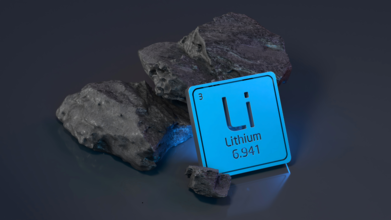- Health Conditions A-Z
- Health & Wellness
- Nutrition
- Fitness
- Health News
- Ayurveda
- Videos
- Medicine A-Z
- Parenting
- Web Stories
How Stimulating Your Vagus Nerve Can Extend Your Life?

When it comes to boosting longevity, most of us focus on the usual suspects: nutrition, exercise, sleep, and mental well-being. But an often-overlooked player in the body’s symphony of wellness is gaining traction — the vagus nerve. It’s being touted by wellness influencers and researchers alike for its potential to reduce inflammation, support brain and heart health, and even improve life expectancy.
Might tickling your vagus nerve actually extend your lifespan? Here's all you need to know — from the science to the trends and the practical tools that might unlock a longer, healthier life.
What Is the Vagus Nerve?
The vagus nerve is the body's longest cranial nerve, running from the brainstem down to the abdomen. It is part of the parasympathetic nervous system that controls what's commonly termed as the "rest and digest" response. This strong nerve conveys messages between the brain and the large organs, such as the heart, lungs, gut, and liver.
In essence, the vagus nerve regulates:
- Heart rate
- Respiration
- Digestion
- Immune function
- Emotions and mood
Its wide-reaching impact on critical functions makes it a crucial component of homeostasis. With the vagus nerve operating at its best, it promotes an internal equilibrium that mitigates stress, diminishes inflammation, and keeps the body ready to repair — all essential for longevity.
What is Vagus Nerve Stimulation?
Vagus nerve stimulation (VNS) is not an alternative theory. It's an FDA-approved therapy for a number of conditions, including treatment-resistant depression, epilepsy, cluster headaches, and migraines. Clinically, VNS usually involves an implanted device that sends electrical pulses to the nerve. The Cleveland Clinic and Mayo Clinic report that VNS is also being looked at as a treatment for inflammatory bowel disease and rheumatoid arthritis.
A 2022 review in Clinical Science built on the nerve's wide therapeutic potential, mentioning its effect on systemic inflammation and autonomic control. Both functions, when dysregulated, are commonly precursors to age-related disease — suggesting why VNS could be involved in prolonging both lifespan and healthspan.
Can You Stimulate Your Vagus Nerve Naturally?
The vagus nerve has blown up online over the last few months, with influencers promoting do-it-yourself methods to "reset" the nervous system. These trending techniques are:
- Humming or chanting
- Ear cartilage massaging
- Neck stretches and head tilting
- Cold water splashing on the face
Though the methods are being pitched for calmness, is there actually science backing the trend?
In a 2020 study in Scientific Reports, researchers determined that some head and neck massage could reduce stress levels by activating the parasympathetic system. But again, the same study revealed that even typical shoulder massages provided the same benefit, which indicated that relaxation is not necessarily from the activation of the vagus nerve alone.
"The relaxation response probably comes from a combination of mechanisms," explains [Expert Name], a clinical researcher and neurologist. "Deep breathing, touch, and body awareness all regulate the nervous system, not the vagus nerve in isolation."
Risks of Vagus Nerve Stimulation
Although these exercises are usually low-risk, professionals warn against following social media blindly without knowing the complete scenario.
“There’s a risk in assuming these techniques are universally safe,” [Expert Name] warns. “For individuals with certain medical conditions — like cervical spine issues or heart arrhythmias — overstimulation or incorrect technique could do more harm than good.”
If you’re considering vagus nerve exercises, especially as a part of a broader health or stress management strategy, consult your healthcare provider first.
Proven Ways to Trigger the Relaxation Response Safely
If you’re looking for science-backed ways to engage your parasympathetic nervous system and enjoy the benefits associated with vagus nerve stimulation, here are expert-recommended strategies:
1. Deep Breathing
One of the easiest tools at hand is slow, diaphragmatic breathing. Research, including one appearing in Sleep Medicine, supports that slow breathing increases parasympathetic activity. The 4-7-8 technique — breathe in for 4 seconds, hold for 7, breathe out for 8 — promotes a decrease in heart rate and blood pressure, lowering strain on the body's systems with repeated use.
2. Cold Water Immersion
Cold water stimulation, particularly to the face, has been associated with vagus nerve activation. This activates the "diving reflex," which slows heart rate and increases vagal tone, giving a calming physiological reboot.
3. Humming and Chanting
Since the vagus nerve is linked to the vocal cords, vibration created from humming or chanting can potentially stimulate it. Anecdotal reports and small studies indicate that this may encourage relaxation and emotional regulation.
4. Regular Exercise
Exercise is still one of the best, long-term methods to maintain vagal tone. In a European Journal of Applied Physiology study, regular aerobic exercise increases parasympathetic function — not only during the exercise session, but for hours post-exercise. It helps deliver better cardiovascular resilience and emotional health, both of which correlate to increased life expectancy.
Can Vagus Nerve Health Really Add Years to Your Life?
Although we’re still in the early stages of research, there’s a growing consensus among scientists that vagal tone — or the strength of vagus nerve activity — plays a central role in predicting health outcomes. Low vagal tone has been associated with:
- Increased inflammation
- Poor emotional resilience
- Higher risk of cardiovascular disease
- Depression and anxiety
On the other hand, increased vagal tone is associated with a more effective stress response, improved sleep, decreased inflammation, and increased heart rate variability — all characteristics of a healthy, adaptable system and increased lifespan.
"Stimulating the vagus nerve might not be a magic pill," states [Expert Name], "but when it is part of an integrative health regimen, it can definitely tip the scale in your direction."
In an era of busy schedules and incessant digital white noise, activating the body's natural calming systems may be a longevity game changer. As much as science continues to develop the vagus nerve stimulation space, one thing is certain: activating the parasympathetic nervous system — through breathing, cold showers, or everyday movement — can be a critical component in fine-tuning both physical and mental well-being.
And the more that researchers dig, the sooner we could find out that this humble nerve contains the key not only to relaxation, but to a healthier, longer life.
Exposome Explained: How Mapping Humans' Lifetime Environmental Exposure Is Linked To Their Health

Credits: Canva
When Melbourne pediatrician Professor Melissa Wake talks about the future of health, she starts with a sobering fact:
Today's children may live shorter lives than their parents.
It is worth the thought that why despite the medical advances, preventable diseases remain among the biggest killers worldwide.
To this, her response, along with a team of scientists at the Murdoch Children's Research Institute is to launch Generation Victoria.
Generation Victoria is a groundbreaking health study that involves more than 125,000 children and their parents. It is one of the largest projects of its kind and at the core, lies the understanding of exposome.
What Is The Exposome?
It is the some of environmental exposures, including the physical, chemical, psychological, and social. It is what we encounter over the course of our lives, and how they interact with out biology.
It includes tangible factors such as diet, lifestyle, income, education, air pollution, and climate conditions, as well as more invisible elements like chemical pollutants, pathogens, and even noise levels. It also accounts for internal processes influenced by these exposures, such as the microbiome (gut bacteria), inflammation, and metabolic activity.
READ: How Green Therapy Can Help You Lower Anxiety And Depression
"Many of these factors overlap and happen in unequal ways," Professor Wake explains, as is reported by ABC News. "If you grow up in a poor area, your exposome is likely to be shaped by external stressors, polluted air, fewer opportunities, and lower income."
In other words, the exposome is not just about where you live, but how every aspect of your environment, from the air you breathe to the relationships you have, shapes your long-term health.
Why Does Exposome Matter?
Johns Hopkins University researcher Dr Fenna Sillé estimates that up to 70%, and in some chronic illnesses, as much as 90%, of disease risk is linked to environmental exposures rather than genetics.
"If the genome is your biological blueprint, the exposome is the lifelong record of how the world interacts with that blueprint," she says, as is reported by ABC News.
Understanding the exposome could help explain why rates of certain illnesses are rising, even among younger generations. For instance, cancers in Australians under 50 are increasing at what researchers call “alarming” rates. Hypotheses point to factors like obesity, sedentary lifestyles, chemical exposure from plastics, and shifts in gut bacteria due to ultra-processed diets and antibiotic use.
Beyond One Toxin At A Time
For decades, researchers studied environmental health risks by isolating single hazards. For instance, it was focused on one pollutant, one chemical, and observing its effects. But that approach misses the reality of human life, says Dr Nick Osborne, an epidemiologist and toxicologist at the University of Queensland.
"In the real world, there are a lot of exposures happening at once," Dr Osborne says, as is reported by ABC News. "The exposome is about recognizing that the body is a complex system interacting with a complex environment."
Advances in artificial intelligence and computational modelling now allow scientists to process vast amounts of overlapping exposure data, making it possible to see the bigger picture.
ALSO READ: UK Scientists Scan Over 100,000 People, What The Human Imaging Study Could Reveal About Your Health?
How Will This Study Help With Exposome?
GenV is tracking more than 50,000 babies born in Victoria between 2021 and 2023, and their parents, over decades. The aim is to link patterns of exposure with disease risk and test interventions to prevent illness.
The study will collect health data at key stages of life, ages 6, 11, and 16 for children, along with samples such as blood, saliva, and breastmilk. Parents will also share updates on their children’s mental and physical health through an app.
Alongside individual health records, researchers will map “layers” of the exposome. These include family and community-level factors, air quality, climate, built environments, food access, and even shopping patterns. Tools such as satellite mapping, environmental monitors, and policy tracking will help assemble a detailed picture.
The goal is not simply to document exposures, but to act on the most critical ones.
"It would be nice to know everything, but what we really need are the most important things, and we need to act on them," Professor Wake says, as is reported by ABC News.
The long-term nature of the study means researchers can test interventions and see their impact decades later. Could changes in urban design reduce childhood asthma rates? Could improving early nutrition lower lifetime risks of diabetes and heart disease?
READ: How Does Your Lifestyle And Environment Impact Aging?
What Are The Challenges?
The problem comes at the very minute level, it is impossible to capture every detail of a person's environment. However, researchers say that even if partial exposome mapping can uncover meaningful insights, it too is helpful.
Some exposures leave measurable imprints, changes in metabolism, or epigenetic effects, where the environment alters how genes function without changing the DNA sequence itself.
This complexity also means causation is hard to prove. Often, disease risk stems from a mix of genetic predisposition and environmental triggers. As Dr Osborne explains: “You might have the ‘bad’ genes, but if you’re not exposed to the ‘bad’ environment, you don’t get the disease.”
The Human Genome Project, launched in May by an international team Dr Sillé, gave scientists a map of our genetic code. It seeks to do the same for environmental exposures.
If successful, it could transform our understanding of disease prevention, shifting focus from treating illnesses to altering the environmental factors that cause them in the first place.
While GenV’s ambition is to turn exposome data into action. By showing how different life pathways lead to health or illness, it hopes to influence not just medical practice but urban planning, education policy, and food systems.
"We are particularly interested in testing whether we can change disease risk, by how much, and for whom," Professor Wake says. "And because we’ve got that long-term horizon, we should be able to look 20, 30, 40 years down the track."
Can THIS Naturally Occurring Element Treat Alzheimer's

Credits: Canva
A new study published this week in Nature has found that the loss of lithium, which is a naturally occurring element in the brain. This could be an early warning sign of Alzheimer’s disease and a key driver of its progression. Alzheimer’s affects more than 7 million Americans, and this finding offers fresh hope for treatment strategies.
The research, led by Bruce A. Yankner, a professor of genetics and neurology at Harvard Medical School, shows that lithium plays a vital role in maintaining the health of all major brain cell types in mice. When lithium levels in the brain drop, it appears to contribute to nearly all the major forms of brain deterioration seen in Alzheimer’s disease.
While lithium’s link to Alzheimer’s is new, the metal itself has a long medical history, most notably in mental health treatments.
What Is Lithium?
Lithium is the lightest metal found in nature. Silvery and soft, it’s best known today for powering our smartphones, laptops, and electric vehicles, all thanks to its ability to store large amounts of energy and discharge electrons quickly.
Its use in everyday products has an unusual history.
The original version of the soft drink 7Up contained lithium citrate and was marketed as “Bib-Label Lithiated Lemon-Lime Soda,” reported the Washington Post.
Lithium was removed in 1948 after the U.S. Food and Drug Administration (FDA) banned its inclusion in soft drinks.
Today, Australia leads the world in lithium production, while Bolivia, Chile, and Argentina form the so-called “lithium triangle” due to their rich reserves.
Lithium’s Role in Mental Health
Lithium carbonate, a chemical form of the metal, has been a cornerstone in the treatment of bipolar disorder since its approval by the FDA in 1970. It is considered a mood stabilizer and is sometimes prescribed for long-term depression management.
Although researchers still don’t fully understand how it works, lithium is thought to reduce stress in the brain and boost neuroplasticity, the brain’s ability to adapt and reorganize itself over time.
The new Nature study adds to this understanding, showing that our brains naturally contain small amounts of lithium.
Historically, lithium use in psychiatry dates back to the mid-19th century, but it gained prominence in the late 1940s when Australian psychiatrist John Cade found it helped stabilize bipolar patients.
“It’s been around for decades, and we have a lot of research and evidence supporting its use,” said Elizabeth Hoge to the Post. Hoge is a psychiatry professor at Georgetown University School of Medicine. However, Hoge cautioned that lithium treatment requires regular monitoring of kidney and thyroid function.
ALSO READ: Could Lithium Deficiency In The Brain Trigger Alzheimer’s?
Balwinder Singh, a psychiatry professor at the Mayo Clinic, as reported by the Post, calls lithium the “gold standard” for bipolar disorder, though it is prescribed less often in the U.S. than in Europe. Only about 10–15% of American bipolar patients take lithium, compared with around 35% in Europe. Singh also highlighted its unique benefit: “Lithium is the only mood stabilizer consistently shown to reduce suicidality.”
That said, some research has questioned lithium’s effectiveness for bipolar depression, finding it may not outperform placebos or antidepressants in certain cases.
Why Researchers Are Exploring Lithium for Alzheimer’s
Lithium’s potential role in Alzheimer’s is not entirely new. Past studies have hinted at its protective effects on the brain.
A 2017 Danish study suggested that communities with higher lithium levels in drinking water had lower rates of dementia.
Yankner’s team became interested in lithium after measuring the levels of 30 different metals in the brains and blood of three groups: cognitively healthy individuals, those in the early stages of dementia, and those with advanced Alzheimer’s. Of all the metals tested, only lithium showed a significant difference among the groups.
Lithium appears to help maintain the brain’s “communication network” by supporting neuron connections, producing the myelin that insulates those connections, and aiding microglial cells in clearing cellular debris—processes essential for memory and cognitive health.
How This Could Lead to New Treatments
In lab tests, Yankner’s team administered small amounts of lithium orotate, a different lithium compound, to mice with Alzheimer’s-like symptoms. The treatment reversed the disease model and restored brain function in the animals.
While the results are promising, Yankner stressed that it’s too early for people to start taking lithium for Alzheimer’s. The compound has not yet been tested in humans for this purpose, and lithium can be toxic if improperly dosed.
“This should spur clinical trials,” Yankner said, but he also cautioned that “things can change as you go from mice to humans.”
For now, the research offers an intriguing lead but not an immediate solution. Clinical trials, if launched soon, could take years to confirm whether lithium could safely and effectively slow or prevent Alzheimer’s in people.
A Small Metal With Big Potential
Scientists, now, are beginning to understand that it may also hold a key to protecting the brain from one of the most devastating diseases of our time.
If future studies confirm lithium’s benefits for Alzheimer’s, it could pave the way for a treatment that works by restoring something the brain naturally produces, rather than introducing an entirely foreign substance.
FOMO, JOMO, and Everything in Between: The Social Media–Mental Health Spectrum

Credits: Canva
If your thumb has developed the muscle tone of a professional gamer and your brain twitches when a notification pops up, you are living the full 21st-century social media experience. Somewhere between the fear of missing out (FOMO) and the joy of missing out (JOMO) lies a vast, unpredictable middle ground that can either boost your mood or fry your mental circuits.
FOMO: Anxiety in a Newsfeed
Dr Ashish Bansal, MD, Consultant Psychiatrist and co-founder of House of Aesthetics in New Delhi, describes FOMO as living in “a comparative world”. It is that creeping dread when your feed is flooded with friends on exotic beach holidays, colleagues posting about career wins, or acquaintances showing off culinary masterpieces you didn’t even know could exist.
“This is not just envy,” Dr Bansal explains. “There is a hidden belief that our life is useless when compared with others.” The consequences are more than emotional discomfort; research links excessive FOMO to high stress levels, poor sleep quality, and even depression.
Counselling psychologist Reshmithaa Nair from Sparsh Hospital in Bangalore adds that FOMO “can push individuals to overcommit socially, compare achievements, and feel inadequate.” That compulsive checking of notifications? It is not harmless. It chips away at focus and self-esteem like a relentless digital woodpecker.
JOMO: Peace in the Offline Lane
Then there is JOMO, the Joy of Missing Out, which is less about Netflix marathons in pyjamas and more about a deliberate retreat from the constant online buzz. “JOMO is about setting boundaries,” says Dr Bansal. “Choosing meaningful, offline experiences over endless online engagement.”
It is not an antisocial media rebellion but a conscious decision to protect mental space. Nair points out that people embracing JOMO often experience “reduced stress, improved sleep, and deeper real-life connections”. It is the art of logging off without the guilt, reclaiming your time like a boss, and refusing to measure your worth in likes or retweets.
The Spectrum: It is Not All or Nothing
While FOMO and JOMO are catchy polar opposites, most of us live somewhere in between. Social media is not inherently evil, nor is it a magical self-care tool. It can be a place of connection, learning, and inspiration, or a breeding ground for burnout, envy, and loneliness.
“The impact depends heavily on usage patterns, self-awareness, and boundaries,” says Nair. It is not just about whether you are online or offline, but how you engage when you are there. Dr Bansal calls this mindful usage, curating feeds to highlight uplifting content, scheduling screen-free hours, and remembering that what you see online is “only a highlight reel, not the full story”.
What is Digital Mindfulness?
Digital mindfulness is not about deleting every app and retreating to a cabin in the Himalayas. It is about being intentional. Nair recommends setting clear screen-time limits, pruning your feed to reflect your values, and resisting the urge to scroll aimlessly.Even small shifts, like swapping passive scrolling for purposeful engagement, can turn social media from a mental drain into a growth tool. “When we engage with intention, it can enhance our well-being. When we use it unconsciously, it can amplify stress and comparison,” she says.
From Doomscrolling to Delightscrolling
So what does balance look like in real life?
- Checking updates once or twice a day instead of every 10 minutes.
- Following accounts that inspire you rather than inflame your insecurities.
- Logging off when you feel more anxious than entertained.
It is about catching yourself before you spiral into a 3 am YouTube hole titled “Top 100 Cats Who Look Like Famous Politicians”.
Remember the Offline Reel
Perhaps the most important reminder is that the best moments often do not make it to Instagram. They happen in the middle of unfiltered laughter, over cups of chai with friends, or while watching the sunset without thinking of hashtags. As Dr Bansal says, “Sometimes the best moments are missed while we are just watching a post.”
Nair leaves us with a gentle nudge: “Almost everything will work again if you unplug it for a few minutes… including you.” That means you, your mind, and your phone have an overheating battery. Whether you thrive in the fast-paced digital current, find serenity in switching off, or navigate somewhere in between, the goal remains the same: keep your mental health at the centre of your online habits.
© 2024 Bennett, Coleman & Company Limited



